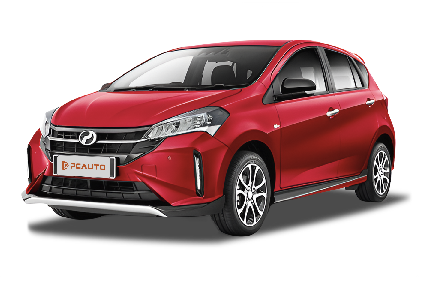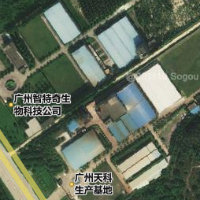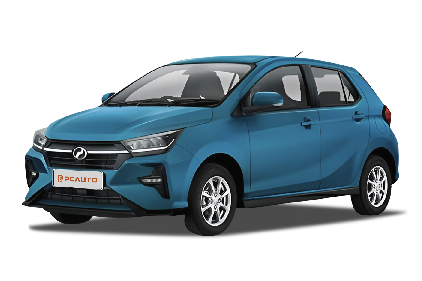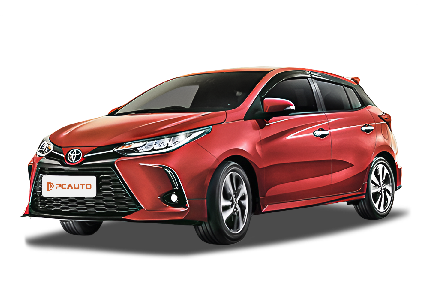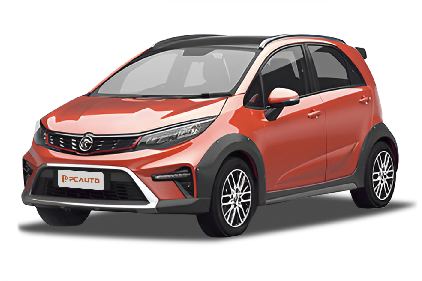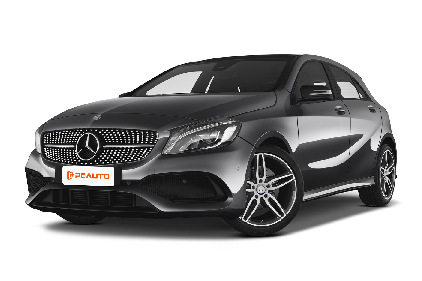Q
Is a Hyundai i10 a good car?
The Hyundai i10 is a small car perfect for city driving in Malaysia. Its compact body size and agile handling make it extremely suitable for navigating through congested urban roads, and parking is also relatively convenient. The 1.2-liter naturally aspirated engine in the i10 may not offer extremely powerful performance, but it shows good fuel-economy, which is ideal for daily commuting.
The interior design is simple and practical. Basic features like the air-conditioning and audio system can meet daily needs. Higher-end versions may also come with convenient features such as a touchscreen and a rear-view camera. In terms of safety, the i10 is equipped with basic safety features like ABS, EBD, and dual airbags, which meet the general requirements of the Malaysian market.
Moreover, Hyundai has a well-established after-sales service network in Malaysia, and the maintenance costs are relatively reasonable. This is a plus for long-term vehicle use. If you're looking for an affordable and practical small car for city commuting, the Hyundai i10 is definitely a choice worth considering. Of course, it's recommended to take a test drive before purchasing to ensure it suits your driving habits and needs.
Q
How much does a Hyundai i10 cost?
In Malaysia, the price of the Hyundai i10 varies depending on the model configuration and year. The price of a new car is approximately between 50,000 and 70,000 Malaysian Ringgit, specifically depending on the selected version and promotional activities. The price of a used car fluctuates according to the vehicle age and condition, usually around 30,000 to 50,000 Malaysian Ringgit.
As an economical small car, the Hyundai i10 is popular among local consumers for its fuel-efficiency, flexible urban driving experience, and reasonable maintenance costs. It is particularly suitable for urban commuting or as a second family car. There is a high demand for small cars in the Malaysian market, and the Hyundai i10 has become one of the competitive choices with its reliable performance and the warranty services provided by Hyundai Motor (such as a 5-year unlimited-mileage warranty).
It is recommended to obtain the latest quotes through the official website or authorized dealers before purchasing a car, and compare the cost-effectiveness of different years and configurations. At the same time, you can pay attention to promotional activities during holidays to get additional discounts.
Q
Is the Hyundai i10 discontinued?
Regarding the question of whether the Hyundai i10 has been discontinued, in the Malaysian market, this model has indeed gradually exited the sales network. The main reason is that Hyundai has adjusted its global product line in recent years, shifting its focus to larger-sized models and the new energy field, such as the Tucson and the Kona Electric, which are more in line with market trends. Although the i10 is no longer sold through official channels in Malaysia, there are still plenty of vehicles available in the used car market. Its cost-effective positioning and nimble handling still appeal to some urban commuters.
For consumers with a limited budget who value fuel efficiency, they can consider localized models at the same level, such as the Perodua Axia or the Proton Saga. These models have more advantages in terms of after-sales service and parts supply. If you have a preference for the Hyundai brand, you can also keep an eye on the recently introduced alternative models like the Hyundai Atos or Aura. They inherit the compact design concept of the i10 and have improved the configuration level.
Overall, the small car market in Malaysia remains active. Consumers can choose a new car or a well - maintained used i10 according to their actual needs.
Q
Is the i10 a 5 seater or 4 seater?
The Hyundai i10 is a standard five-seater vehicle with a 2+3 seat layout. It can accommodate two people in the front row and three in the back row, fully meeting the demand for small cars in the Malaysian market. Although the car has a compact body size, through reasonable space design, it ensures the basic seating comfort for five adult passengers. Meanwhile, the trunk space can also meet daily needs. In Malaysia, small cars like the i10 are very popular. They are not only suitable for city driving and easy to park but also have excellent fuel economy, which is very suitable for local road conditions and driving habits. For family users or young consumers, the five-seat design of the i10 offers more flexibility, making it capable of handling both daily commutes and weekend outings. It should be noted that although the i10 is a five-seater, the comfort of the middle seat in the back row during long-distance driving may be slightly inferior to the seats on both sides, which is a common feature of most small cars. In addition, it is recommended to take a test drive to experience the space and ensure it meets your personal needs when making a purchase.
Q
Is the Hyundai i10 a small car?
Yes, the Hyundai i10 is indeed a small car in the A-Segment. It's highly suitable for the driving environment in Malaysian cities, especially on narrow streets and in heavy traffic. Its compact body is about 3.6 meters long, with a small turning radius, making parking a breeze. Meanwhile, it offers good fuel economy, which is ideal for daily commuting.
In the Malaysian market, the i10 is well-received for its affordable price and practical features. For example, it comes standard with air - conditioning and Bluetooth connectivity. Higher-spec versions may also be equipped with a touchscreen and a rear-view camera. Although the interior space is relatively limited, it can comfortably accommodate four people for short trips.
Its competitors in the same segment include the Perodua Axia and Proton Saga. However, the i10 has a younger-oriented brand image and design style. In terms of power, it usually comes with a 1.0L or 1.2L naturally-aspirated engine, which is perfect for consumers seeking economy and practicality.
If you need more space or often take long - distance drives, you might consider upgrading to a B-Segment car, such as the Hyundai i20 or Toyota Vios. But the i10 still remains an excellent choice for city driving and offers great value for money.
Q
What is the common problem in the Hyundai i10?
As an economical and practical small car, the Hyundai i10 has won the favor of many consumers in the Malaysian market. However, there are some common issues that car owners should pay attention to. For example, some owners have reported problems such as unstable engine idle or difficult starting, which are usually related to carbon deposit accumulation or spark plug aging. Regularly cleaning the throttle body and replacing the spark plugs can effectively prevent these problems.
In addition, the air-conditioning system sometimes fails to provide sufficient cooling. This may be caused by a clogged condenser or refrigerant leakage. It is recommended to check the air-conditioning pipes once a year. As for the body electronic systems, the power window switches may sometimes have poor contact. Cleaning the contacts or replacing the switches can solve this problem.
It's worth noting that the i10's suspension system is relatively stiff. This is a common setting for small cars to enhance handling, but it filters road bumps more directly. If you hear abnormal noises, it may be that the bushings are worn and need to be replaced. In Malaysia's hot and rainy climate, it's also very important to regularly check the battery status and the aging of the windshield wiper blades.
These maintenance tips are not only applicable to the i10 but also have reference value for other small cars. As long as the car is maintained on schedule, it can still show good durability.
Q
Is the i10 fuel efficient?
The Hyundai i10, as a compact city car, performs well in fuel economy and is well-suited to the city roads and traffic conditions in Malaysia. Its 1.2-liter naturally aspirated engine consumes about 5.5-6.0 liters per 100 kilometers when driving in the city, and this can drop to 4.8-5.3 liters per 100 kilometers during highway cruising. Overall, it's a relatively fuel-efficient vehicle, especially suitable for drivers who commute regularly in congested cities like Kuala Lumpur or Penang.
For owners who want to save more fuel, it's recommended to maintain proper tire pressure, avoid sudden acceleration and hard braking, and service the vehicle regularly. These habits can all help improve fuel efficiency. Additionally, if you have higher requirements for fuel economy, you can also consider other models in the same class, such as the Perodua Axia or Proton Saga. They are also well-known for their fuel-saving features. However, the final choice should be based on your personal budget, driving habits, and needs.
All in all, the i10's fuel efficiency is decent and can meet the daily usage needs of most Malaysian consumers.
Q
Which car model is similar to a Hyundai i10?
In the Malaysian market, models similar to the Hyundai i10 include the Kia Picanto, Perodua Axia, and Chevrolet Spark. They all belong to the compact hatchback category, are suitable for city driving, and come with affordable prices. The Kia Picanto shares a platform with the Hyundai i10, having similar dimensions and fuel economy, but its design is more sporty. The Perodua Axia, a popular local model, is well-known for its low maintenance costs and practicality, making it a great choice for consumers on a tight budget. The Chevrolet Spark offers an option from an American brand. Its interior configuration is relatively basic, but it has good reliability.
All these models are equipped with small-displacement engines ranging from 1.0 to 1.2 liters, which are suitable for congested urban road conditions and have excellent fuel consumption performance. If you pay attention to the brand's after-sales network, Hyundai and Perodua have a higher coverage of service centers in Malaysia, while Chevrolet has relatively fewer.
In addition, the second-hand resale value of this type of vehicle is greatly affected by the vehicle's age and mileage. It is recommended to compare the warranty terms and regular maintenance packages of different brands before purchasing a car, as it will be more cost-effective in the long run.
Q
How long will a Hyundai i10 last?
As an economical and practical compact car, the Hyundai i10 is quite popular among many consumers in the Malaysian market for its fuel efficiency and low maintenance costs. Its service life mainly depends on daily maintenance and driving habits. Under normal circumstances, if you regularly replace vulnerable parts such as engine oil and filters and follow the manufacturer's recommended maintenance schedule, the vehicle can run stably for 150,000 to 200,000 kilometers or even longer. The hot and humid climate in Malaysia may have a certain impact on rubber parts and electronic components. It is recommended to pay special attention to regularly checking the condition of belts, hoses, and the battery. Meanwhile, when parking the car for a long time, try to choose a shady place to reduce the aging of the car paint and interior caused by high temperatures.
It's worth noting that the application of Hyundai's GDi turbo - charging technology and intelligent transmission in models like the i10 allows the powertrain to be both efficient and quite durable. As long as you conduct regular and proper maintenance on time and avoid long - term overloading or aggressive driving, the i10 can fully meet the long - term needs of urban commuting and medium - and short - distance travel in Malaysia.
Of course, the residual value of a used car is also closely related to the maintenance record. A complete maintenance file from a 4S store will significantly enhance its competitiveness when reselling.
Q
Can 5 people sit in an i10?
As a compact hatchback, the Hyundai i10 is officially designed as a 5-seater. In theory, it can accommodate 5 passengers, but the actual experience needs to take into account the daily usage scenarios of Malaysian users. The width of the rear seats of this car is about 1,280mm. Taking the shoulder width of an adult male, which is about 400mm, as a reference, short-distance rides can be acceptable. However, during long-distance drives, the middle passenger in the back row will feel cramped due to the raised floor and the fixed headrest design. If you often need to carry 5 people at full capacity, it is recommended to give priority to B-class cars with wider bodies, such as the Toyota Vios (with a body width of 1,730mm) or the Honda City (with a body width of 1,698mm). These types of cars have 100-150mm more lateral space in the rear row, and the central floor is flatter.
It's worth noting that under the Malaysian road tax system, the 1.0L engine (998cc) of the i10 falls into the category below 1,000cc, with an annual fee of only RM20. It also has better fuel economy than models with larger displacements. For young families or student groups with a limited budget and mainly traveling in groups of 2-4 people, it is still a high-value choice. When buying a car, it is recommended to visit the showroom to test the space. Pay particular attention to the convenience of installing a child safety seat in the back row, as the ISOFIX interfaces of the i10 are located on the two side seats, and only the seat belt can be used to fix the seat in the middle position.
.jpg)

.jpg)
.jpg)
.jpg)

